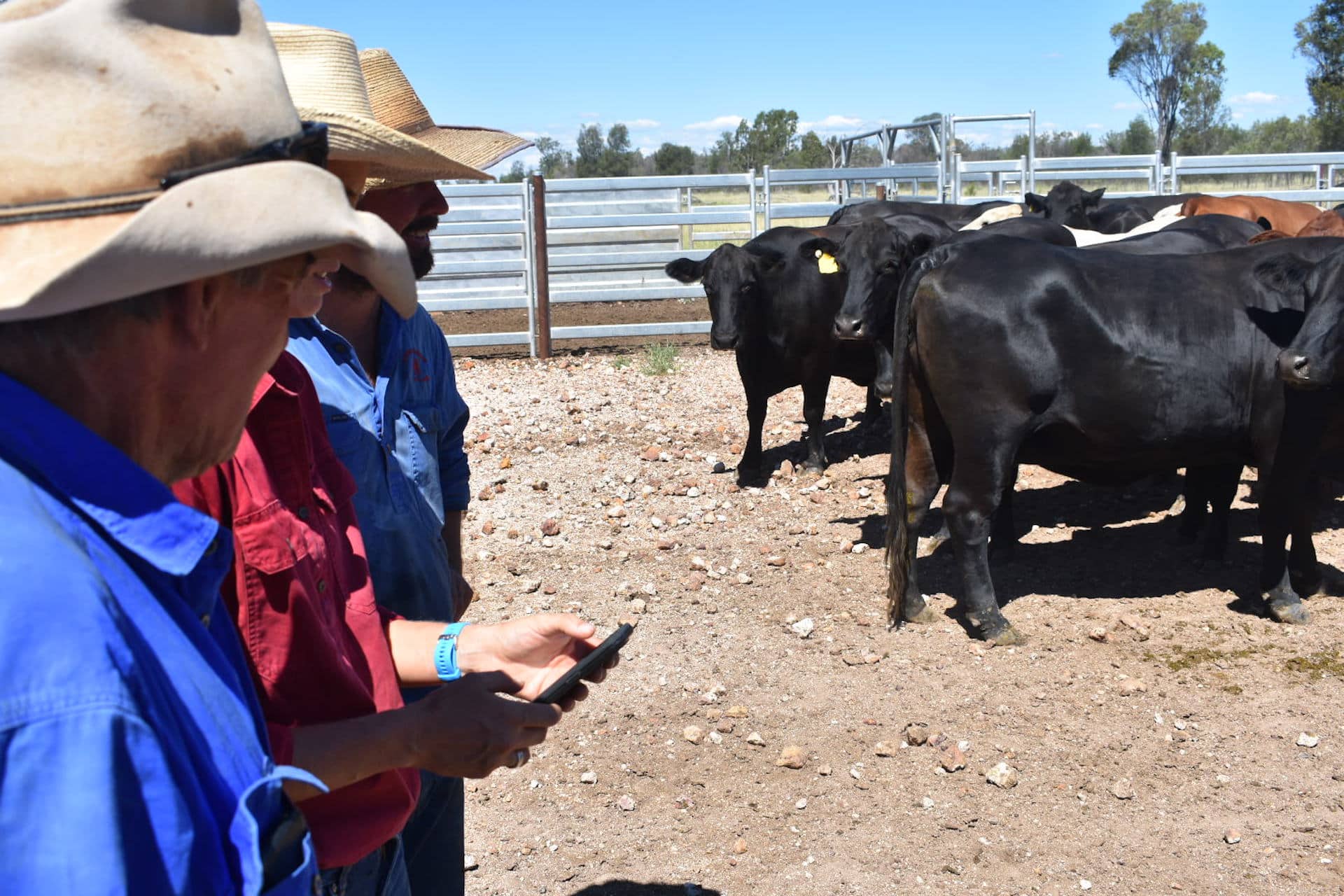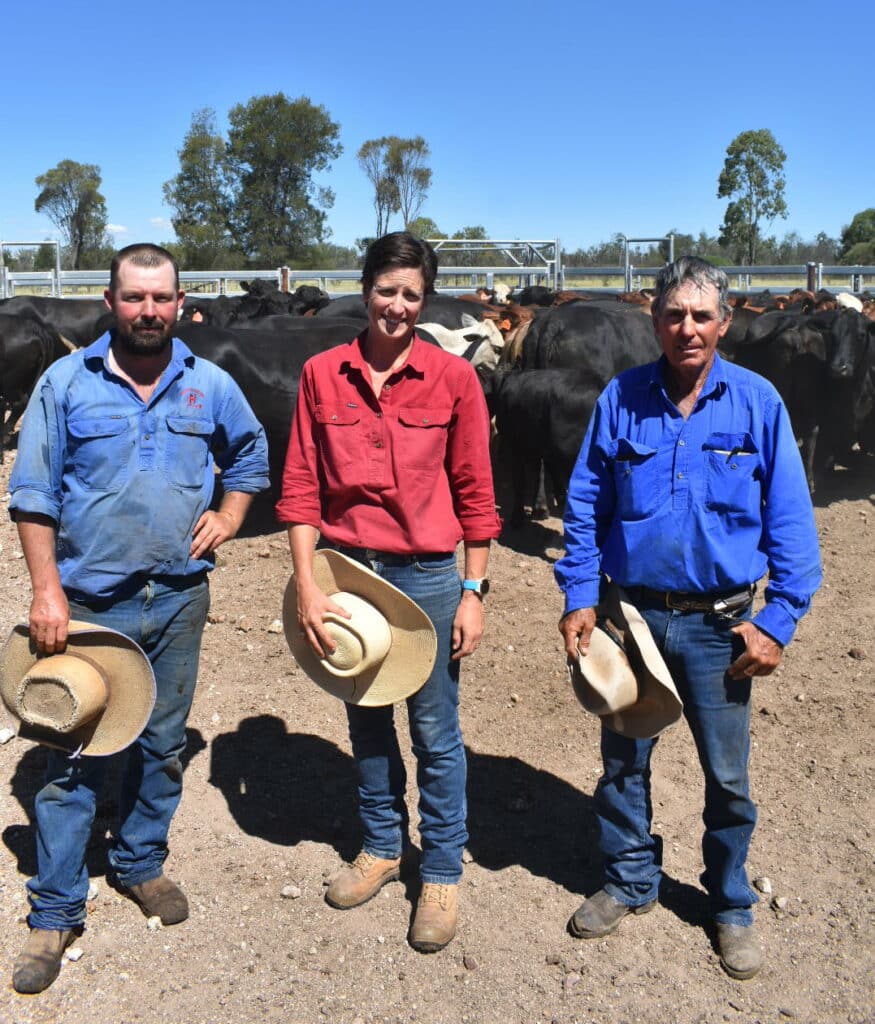The Hughes Family: Going green without landing in the red

On the Western Darling Downs in South East Queensland, the Hughes family runs a cattle operation that combines regenerative farming techniques with technology and innovation to improve the land while producing quality beef.
Across 13,000 acres, on “Dulacca Downs” and “Heatherlea”, they run some 3,000 cattle. Stock are brought in from Roma and Dalby saleyards. After around 150 days, they are processed in Casino and sold under the family’s own RQM brand.
“We run our cattle operation the same way as we live our life, and it’s reasonably sustainable,” Phillip Hughes says of the business he runs with wife Adele and daughter-in-law Anna, along with his son Alister and Alister’s wife Jules, who manage the meat marketing segment of the business, Rangeland Quality Meats.
“Anna and Adele are very organic in their thinking,” he says. “We have a cow and Anna makes butter, we fatten our own chooks, we get bacon made from our own pigs – quality, mineral-rich food is very important to us as a family.”
Anna says they do straddle the divide between locking up the land and more traditional land management. “It’s a blended approach because, at the end of the day, you can’t do the regenerative work if you aren’t able to maintain your financial position,” she points out. Or, as Phillip puts it: “You can’t go green if you’re in the red.”

Anna’s late husband, and Phillip and Adele’s son, Lachlan, was passionate about regenerative practices for grazing lands. The Lachlan Hughes Foundation, founded in his memory, supports people who are ready to implement changes themselves.
“A lot of people pay lip service to this stuff, but you’ve got to get up off your butt and do something about that,”Phillip says. “That was Lach’s message, and that’s what’s really important to us.”
On their properties, the Hughes implement rotational grazing, moving cattle through more than 60 paddocks. They track cattle movements through AgriWebb, which, integrated with Cibo Labs remote pasture sensing, gives them valuable insight into pasture bulk and grazing days left. “That data is invaluable if you had a borderline decision about which paddock you might move cattle into,” Anna says.
The Hughes also do plant tissue testing, getting an analysis of their grasses’ nutritional makeup. Any shortcomings are addressed through a grain assist program, with rations produced at the Hughes’ mill.
But the right feed is only half the equation for making cattle thrive. The Hughes take a holistic approach to animal wellbeing. Rather than HGPs and rumen modifiers, cattle have probiotics for a healthy rumen and optimal feed conversion. They go through an induction process, so they can be handled with low-stress techniques, using horses and cattle dogs.
And along with these holistic practices, the Hughes are always making management decisions backed by data. “Every time cattle are weighed, it gets recorded through AgriWebb,” Phillip says. “We have a record of them all the way through.”
Monitoring cattle closely enables the Hughes to treat them according to their needs. “We can pull performers out, and we punch them along,” Philip says. “We can look at the poor performers and say, ‘What is the problem with that bottom 25 per cent?’ We can question strategies around that, such as changing the feed.”
For Phillip, the improvement of the land and their system is a work in progress rather than a revolution. “You’re not going to come here and say, ‘Holy hell, these people found the promised land!’ but it’s a positive process,” he says. We measure everything and sit down and think strategically about it. And then intervene where we need to.”
The process is one that Anna enjoys. “What excites me is producing a product – in our case cattle – to the very best of our ability using the productivity and analysis tools that we have available to us, while at the same time doing all we can to improve the soil and pastures and environments in which we live,” she says.
“This is an ever-evolving process, of course, so continual education of ourselves and our practices is always something we are on the active lookout for. Using a progressive program like AgriWebb is great for us because we grow together.”
Ready to see how AgriWebb can help you get more done, faster, or even prepare and pass audits with ease, like the Hughes family? Click here to contact a member of our team.